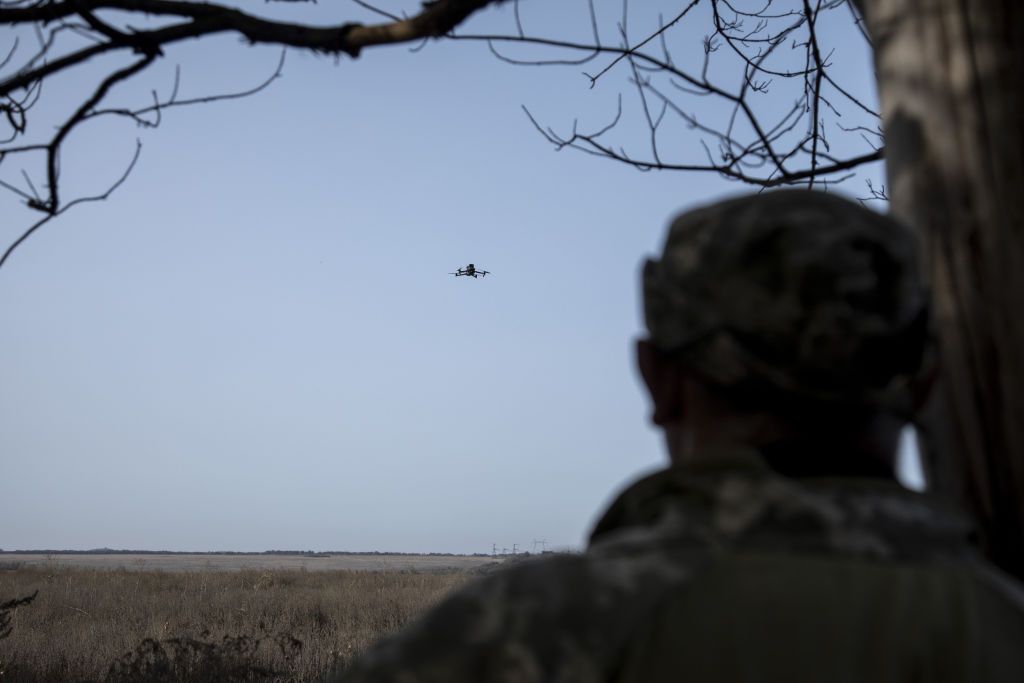The Belarusian Air Force reportedly downed a Russian Shahed-type drone over the country’s Homel Oblast on Oct. 20, marking the third time a Belarusian aircraft has downed a drone that entered its airspace. Three Russian attack drones entered Belarus’ southern territory around 12:30 a.m. local time, and aircraft were scrambled to intercept the drone near the town of Yelsk in Homel Oblast. Residents reported hearing sounds of explosions during the incident. Ukraine’s Air Force also reported downing 31 out of the 51 attack drones that Russia launched overnight, with 13 drones lost from Ukraine’s radar. This confrontation comes amidst escalating drone attacks in the region.
Belarusian Hajun, a monitoring group, has documented multiple cases of Russian Shahed-type drones flying off course to Belarus over the past few months as drone attacks intensify in the region. In early September, Belarus’ military confirmed the downing of a drone over its territory for the first time since the start of Russia’s full-scale invasion of Ukraine. Despite these incidents, Minsk has not publicly raised objections to Moscow, its key ally. This recent downing of the Russian drone highlights the increasing tensions in the region and the potential for further confrontations between the two countries.
Ukraine has reported striking an airfield and the “largest explosives factory” in Russia, targeting the state-owned Sverdlov Plant in the city of Dzerzhinsk in the Nizhny Novgorod region, located around 900 kilometers deep into Russian territory. The exact details and extent of the strike have not been independently verified, but this action adds to the escalating hostilities between Ukraine and Russia. The ongoing conflict between the two countries has seen numerous incidents of strikes, counter-strikes, and military engagements, fueling concerns of further escalation and spread of violence in the region.
The downing of drones and airstrikes in the region highlight the complex and volatile nature of the conflict between Ukraine, Belarus, and Russia. The use of drones for reconnaissance and offensive purposes has become increasingly prevalent in modern warfare, leading to new challenges and strategies for defense and security forces. The involvement of multiple countries in these incidents complicates the situation further, raising concerns about the potential for broader regional conflict and the impact on civilian populations. The continuous escalation of tensions underscores the need for diplomatic efforts to de-escalate the situation and prevent further violence.
The international community is closely monitoring the situation in Eastern Europe, particularly the conflict between Ukraine and Russia, as well as the implications for neighboring countries like Belarus. The downing of drones and airstrikes represent just a fraction of the ongoing military activities in the region, with significant implications for regional stability and security. The involvement of other countries, such as Belarus, adds another layer of complexity to the conflict and the efforts to find a peaceful resolution. It is crucial for global leaders to engage in dialogue and diplomacy to prevent further escalation and mitigate the impacts of the conflict on the civilian population.
As tensions continue to rise and military activities intensify in Eastern Europe, the need for a comprehensive and coordinated approach to address the conflict becomes more urgent. The downing of the Russian drone in Belarus, along with the reported airstrikes in Russia by Ukraine, underscores the interconnected nature of the conflict and the potential for wider regional destabilization. Efforts to de-escalate the situation, protect civilian populations, and find a peaceful resolution to the conflict are paramount. International cooperation and dialogue are essential to prevent further violence and ensure the security and stability of the region.


